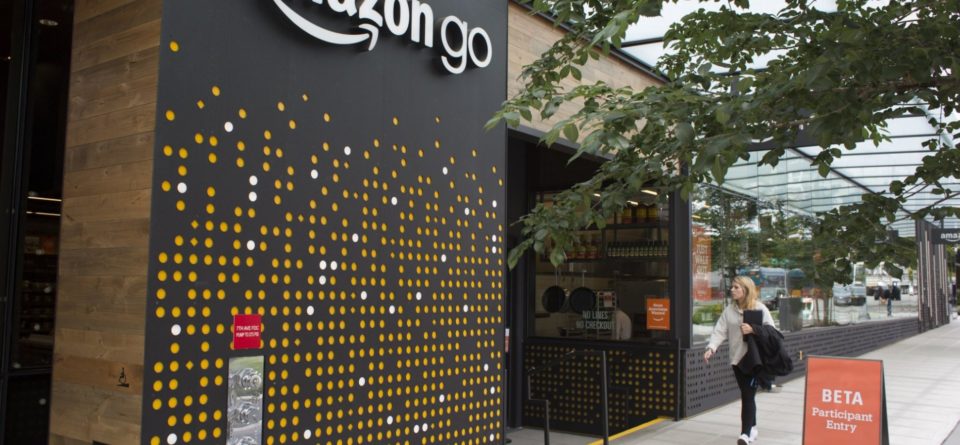So how exactly is A.I. changing the retail environment? Here are five of the most fascinating trends to watch from CB Insights’ report.
read more – copyright by www.inc.com
 CB Insights reports that Whole Foods considered charging its top vendors around $300,000 for several weeks of prime shelf space. Even if you can pay for top billing in Whole Foods and elsewhere, you’re still competing with many other brands for visibility.
CB Insights reports that Whole Foods considered charging its top vendors around $300,000 for several weeks of prime shelf space. Even if you can pay for top billing in Whole Foods and elsewhere, you’re still competing with many other brands for visibility.
That’s left an opening for a slew of startups to develop technology to track metrics like share-of-shelf and distribution. Computer vision platform Trax Retail analyzes what happens on physical shelves using images from in-store cameras, robots, or mobile phones to create a digital version of the physical store. Meanwhile, Walmart is already using Bossa Nova robots to monitor price tags and missing items on shelves.
In March, L’Oreal acquired augmented reality startup Modiface, a unique move for a traditional beauty company. Modiface helped L’Oreal launch Style My Hair mobile app, which lets users virtually try on different hairstyles. (More recently in August, L’Oreal partnered with Facebook to let customers show off their looks on the social network–and then click to the website to make a purchase.) Brands like Sephora and Estee Lauder also use AR apps that allow customers try on different virtual make-up looks. Retailers can then analyze the data collected on face shape, wrinkles, and skin tone to better predict inventory needs.
In an interview with Billboard last year, Jeff Bezos said that “voice interface is only going to take you so far on shopping.” The Information reported that only 2 percent of Amazon Alexa users used the voice assistant to make a purchase this year, and only 10 percent of those were return shoppers.
While e-commerce is growing, customers still prefer going to the store and seeing products in person. According to a report by the National Retail Federation, only 21 percent of people surveyed self-identify as primarily online shoppers, while 79 percent said they still buy at half of the items they need in stores.
Since debuting its first cashierless store in Seattle in 2016, Amazon Go has expanded its footprint into Seattle, San Francisco, and, soon, New York City. Amazon has also encouraged other startups such as San Francisco-based startup AiFi to develop cashierless store technology, using artificial intelligence, cameras, and sensors.
Thank you for reading this post, don't forget to subscribe to our AI NAVIGATOR!
According the National Retail Federation, shoplifting and paperwork error, among other things, cost U.S. retailers around $47 billion. CB Insights suggests that these new cashierless store models reduce the likelihood of stealing–they’re loaded with cameras and automatically charge customers. Plus, the Go stores, which are a fraction of the size of a traditional supermarket at about 1,800 to 3,000 square feet, are currently restricted to Prime members only. To be sure, it’s not at all clear that this “grab-and-go” technology will be adopted on a mass scale–at least not anytime soon.[…]
read more – copyright by www.inc.com


So how exactly is A.I. changing the retail environment? Here are five of the most fascinating trends to watch from CB Insights’ report.
read more – copyright by www.inc.com
That’s left an opening for a slew of startups to develop technology to track metrics like share-of-shelf and distribution. Computer vision platform Trax Retail analyzes what happens on physical shelves using images from in-store cameras, robots, or mobile phones to create a digital version of the physical store. Meanwhile, Walmart is already using Bossa Nova robots to monitor price tags and missing items on shelves.
In March, L’Oreal acquired augmented reality startup Modiface, a unique move for a traditional beauty company. Modiface helped L’Oreal launch Style My Hair mobile app, which lets users virtually try on different hairstyles. (More recently in August, L’Oreal partnered with Facebook to let customers show off their looks on the social network–and then click to the website to make a purchase.) Brands like Sephora and Estee Lauder also use AR apps that allow customers try on different virtual make-up looks. Retailers can then analyze the data collected on face shape, wrinkles, and skin tone to better predict inventory needs.
In an interview with Billboard last year, Jeff Bezos said that “voice interface is only going to take you so far on shopping.” The Information reported that only 2 percent of Amazon Alexa users used the voice assistant to make a purchase this year, and only 10 percent of those were return shoppers.
While e-commerce is growing, customers still prefer going to the store and seeing products in person. According to a report by the National Retail Federation, only 21 percent of people surveyed self-identify as primarily online shoppers, while 79 percent said they still buy at half of the items they need in stores.
Since debuting its first cashierless store in Seattle in 2016, Amazon Go has expanded its footprint into Seattle, San Francisco, and, soon, New York City. Amazon has also encouraged other startups such as San Francisco-based startup AiFi to develop cashierless store technology, using artificial intelligence, cameras, and sensors.
Thank you for reading this post, don't forget to subscribe to our AI NAVIGATOR!
According the National Retail Federation, shoplifting and paperwork error, among other things, cost U.S. retailers around $47 billion. CB Insights suggests that these new cashierless store models reduce the likelihood of stealing–they’re loaded with cameras and automatically charge customers. Plus, the Go stores, which are a fraction of the size of a traditional supermarket at about 1,800 to 3,000 square feet, are currently restricted to Prime members only. To be sure, it’s not at all clear that this “grab-and-go” technology will be adopted on a mass scale–at least not anytime soon.[…]
read more – copyright by www.inc.com
Share this: